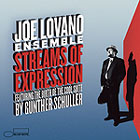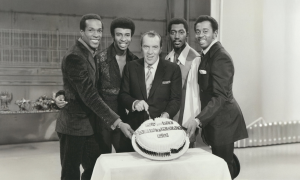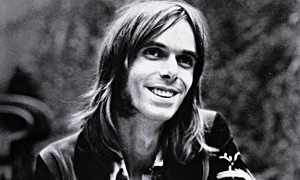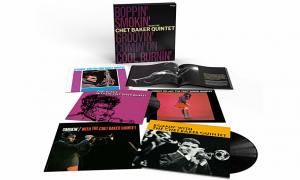Home » Jazz Articles » Film Review » Monterey Pop: Sometimes You Really Can't Go Home Again
Monterey Pop: Sometimes You Really Can't Go Home Again
The performances highlight a chasm of disparity between the good and the bad.
But in 1967 it was all about peace and love—and plenty of drugs. Something made more than evident in The Criterion Collection's recent restoration and issue of The Complete Monterey Pop Festival, a three-DVD set which includes the original 1968 film along with two other DVDs—one containing the complete (albeit short) performances of Jimi Hendrix, Otis Redding, and another with two hours of outtake performances by bands that didn't make it into the original film and additional songs by those who did.
Viewing Monterey Pop and Jimi Plays Monterey/Shake! Otis at Monterey, what becomes increasingly clear is how poorly some of the artists represented weather over time. There are some whose performances are (no pun intended) as incendiary now as they were then, including the Hendrix and Redding segments. But the endless stream of hippies—clearly zoned out and most often unsuccessfully trying to string a few words together—will likely cause anyone who was around at the time and sharing the same general mindset (or lack thereof) to scratch their head and wonder, "What was I thinking?!?!
 Monterey Pop
Monterey Pop
Directed by D.A. Pennebaker
The Criterion Collection
2006 (1968)
It's too easy to look back with fondness at one's youth, and there's really nothing wrong with that. But it's also too easy to forget that with age comes wisdom, and it's a sure bet that most of the people interviewed in Monterey Pop will look back at themselves with either amusement or embarrassment. I know I do, and I just barely missed being a part of that scene by a couple of years.
There's a certain cringe factor at watching a group of kids whose attempts at distinguishing themselves from the crowd ultimately found them meshing into one amorphous mass where hairstyles and clothes (or lack thereof) may have differed, but were ultimately unsuccessful. But there are some "light bulb moments that indicated not everyone at the time was forgetting about the increasing business aspect of running a festival and managing bands. The sixties were, after all, when the music business truly began to evolve into a real industry that set the precedent for where, with some sadness, we are now.
The Mama's and the Papas may have been "California Dreamin', but ostensible leader John Phillips was all business, as the camera catches him on the phone sounding nothing like the smiling "peace and love persona that he maintained on stage. It would appear that even during the Summer of Love exploitation wasn't to be avoided.
As for the performances, if anything they highlight a chasm of disparity between the good and the bad. The real test of a band is how they perform live, since producers could often make the most untalented singers and instrumentalists sound, well, at least half-way decent. The Mamas and the Papas were nothing more than a pop confection at best, but live they had a hard time singing together and in tune. But at least they only had Phillips playing an instrument, supported by a backing band that, no doubt, was a pick of capable players, invisible though they were to the audience. Jefferson Airplane suffer through the bombastic and uncontrolled vocals of Grace Slick and Marty Balin—wailing that just got worse and worse as their one song went on...and on. It also proved that just because you know what notes sound blue it doesn't mean you can deliver them with any conviction.
But at least Jefferson Airplane had guitarist Jorma Kaukonen, bassist Jack Cassidy and drummer Spencer Dryden—three musicians who could actually play. Not so for Canned Heat and Country Joe and the Fish, neither of whom seemed capable of tuning their instruments. Equally true, sadly, for Janis Joplin who, while her cathartic "Ball and Chain is a clear highlight of the film, was all too often surrounded by less-than-capable players, in particular her first band, Big Brother and the Holding Company.
But what the bad performances do, when watching Monterey Pop, is elevate some good performances to great, and some great performances to transcendent. Trumpeter Hugh Maskela may have seemed an odd choice for a pop festival, and the same could be said for sitar legend Ravi Shankar, who gets more screen time than anyone else. But one thing that could be said for the "peace and love generation is that their minds were considerably more open than generations to come. And both Maskela and Shankar deliver strong performances.
The conflict between The Who and Jimi Hendrix, and who would go on first, is well- documented. Given Hendrix's meteoric rise in 1967—and his clearly revolutionary style— it's no surprise that The Who's Peter Townshend didn't want to go on after him. Nor did Hendrix want to go on after The Who who, at the time, were ending their sets in a blaze of glory as Townshend and drummer Keith Moon would trash the stage. But a flip of the coin settled the score, and The Who went on first, delivering a blistering version of "My Generation that ended with the requisite chaos. But as extreme as The Who were, this was a band that had woodshed considerably, and consequently deliver one of the most powerful performances of the film.
Putting Country Joe and the Fish after The Who just made them look even worse. Thankfully, when Otis Redding hit the stage with a crack band that was completely rehearsed, tight as a drum—in tune, even—and exciting in a completely different way than The Who, it became easy to forget if not forgive Country Joe's multiple transgressions.
But when Hendrix hit the stage—his first major North American performance—it becomes clear that the audience fortunate enough to be there—and those, years later, fortunate enough to remember it—were in the presence of true greatness. Hendrix's performance of the perennial garage band classic "Wild Thing was incredible enough even before he burned his guitar. Placing oneself back at the time, seeing a left-handed guitarist, who literally flipped a regular right-hand instrument upside down and restrung it, playing in a completely unorthodox fashion, was stunning enough. But to hear the sounds he managed to pull out of a Fender Stratocaster and a wall of Marshall amplifiers was more than most could understand.
While other bands were loose in ways that had nothing but negative connotations, Hendrix was loose in the way a jazz artist is loose—appreciative of the song's form, albeit, in this case, a very simple form—but treating it with complete fluidity where anything was possible and nothing could be predicted. Drummer Mitch Mitchell was like Elvin Jones crossed with Keith Moon on steroids, while bassist Noel Redding managed to anchor the trio—a difficult task considering the maelstrom going on around him.
At this point Hendrix was being pushed to be a theatrical performer, something he'd distance himself from in relatively short order. So his guitar-burning antics were really something he had to do; but had he not, his performance would have been no less stunning and paradigm-shifting.
 Jimi Plays Monterey / Shake! Otis at Monterey
Jimi Plays Monterey / Shake! Otis at Monterey
Directed by D.A. Pennebaker
The Criterion Collection
2006 (1986)
While Jimi Plays Monterey could be considered a money grab—a thirty-minute performance fleshed out by some low-fi British footage, it's absolutely worth the watch. What his performance of "Wild Thing in Monterey Pop failed to express was just how revolutionary he was.
There's no doubt Hendrix was completely stoned out of his mind at the performance. His between-song patter was the stream-of-consciousness meanderings of someone on a cocktail of mind-expanding drugs. But like jazz guitarist Lenny Breau—who was equally high most of the time, but also able to play with crystal clarity—Hendrix did things that had simply not been heard before. With a bluesy-edge that made peers like Eric Clapton sound tame, and a fluid, unencumbered approach that made absolutely everything possible, the complete Monterey footage is as exciting now as it must have been then.
Playing three tunes from his debut, Are You Experienced? (MCA, 1967), a terrific cover of Dylan's "Like a Rolling Stone and, of course, "Wild Thing to close out the set, Hendrix's set was like a bolt of lightning out of the blue. Others would follow and use some of the same showmanship devices—playing with the guitar behind the back, playing with one's teeth. With Hendrix it wasn't shtick though, because they were his.
Still, these feats of showmanship didn't affect his ability to play one iota. Whether tearing out his own unique blues language—possibly largely due to the very unorthodoxy of playing a right-handed guitar flipped around and restrung—eliciting huge bursts of controlled feedback from his amplified or using his wammy bar to make his guitar growl and scream, Hendrix's performance at Monterey was the opening salvo to what would, sadly, turn out to be a tragically short career.
Still, between that summer and September, 1970 when he would die from drug-related complications, he went from the pop showmanship of Are You Experienced? (MCA, 1967) to the expansive Electric Ladyland (MCA, 1968) and, finally, the incomplete First Rays of the New Rising Sun—finally released in 1997 and signalling a new move towards greater lyricism and soul that makes his death even more tragic.
The 20-minute Otis Redding performance that fleshes out the DVD is as polished and energized as the one track on Monterey Pop suggested. A different kind of energy from Hendrix, one that relied on polish and the kind of "planned accidents also fundamental to James Brown's stage act, this short clip is all the more tragic for the fact that Redding would die a few months later in a plane crash. Whether brash and brassy on "Shake or tender and soulful on "Try and Little Tenderness, what ties these two short films together on the DVD is the question of where these two artists would be today, had their lives not been cut off so quickly.
Monterey Pop is an intriguing if slightly embarrassing film to watch, because for every good performance there was a weak one; for every outstanding performance there was an outstandingly bad one. But it's still is a well-done look at a time that few today can really imagine—when people were more open, regardless of the pharmacological reasons, to more and it was possible to bring together combinations of musical styles and be enthusiastically received. Jimi Plays Monterey / Shake! Otis at Monterey, despite its short running time, is even better, because it brings together two of Monterey's best performances.
Both discs, as usual with Criterion, are beautifully restored and feature a variety of bonuses, including audio commentaries, interviews with Redding, Peter Townshend, John Phillips and others, and booklets filled with valuable information to put the event into the context of its time.
Monterey Pop
Running Time: 79 minutes, original 1:33 aspect ratio.
Special Features: New high definition transfer, supervised by D.A. Pennebaker; New 5.1 mix by Eddie Kramer in Dolby Digital and DTS; Audio commentary by festival co-producer Lou Adler and Pennebaker; Exclusive video interview with Adler and Pennebaker; Audio interviews with festival co-producer John Phillips, festival publicist Derek Taylor, and performers Cass Elliott and David Crosby; Photo Essay by photographer Elaine Mayes; Original theatrical trailer and radio spots; Monterey Pop scrapbook.
Jimi Plays Monterey / Shake! Otis at Monterey
Running Time: Jimi Plays Monterey 49 minutes, Shake! Otis at Monterey 19 minutes, original 1:33 aspect ratio.
Special Features: New high definition transfer, supervised by D.A. Pennebaker; New 5.1 mix by Eddie Kramer in Dolby Digital and DTS; Two audio commentaries by music critic and historian Peter Guralnick: on Otis Redding's Monterey Performance, song by song, and on Redding before and after Monterey; Interview with Phil Walden, Redding's manager from 1959 to 1967; A new essay by David Fricke.
Tags
PREVIOUS / NEXT
Various Artists Concerts
Support All About Jazz
 All About Jazz has been a pillar of jazz since 1995, championing it as an art form and, more importantly, supporting the musicians who make it. Our enduring commitment has made "AAJ" one of the most culturally important websites of its kind, read by hundreds of thousands of fans, musicians and industry figures every month.
All About Jazz has been a pillar of jazz since 1995, championing it as an art form and, more importantly, supporting the musicians who make it. Our enduring commitment has made "AAJ" one of the most culturally important websites of its kind, read by hundreds of thousands of fans, musicians and industry figures every month.


































